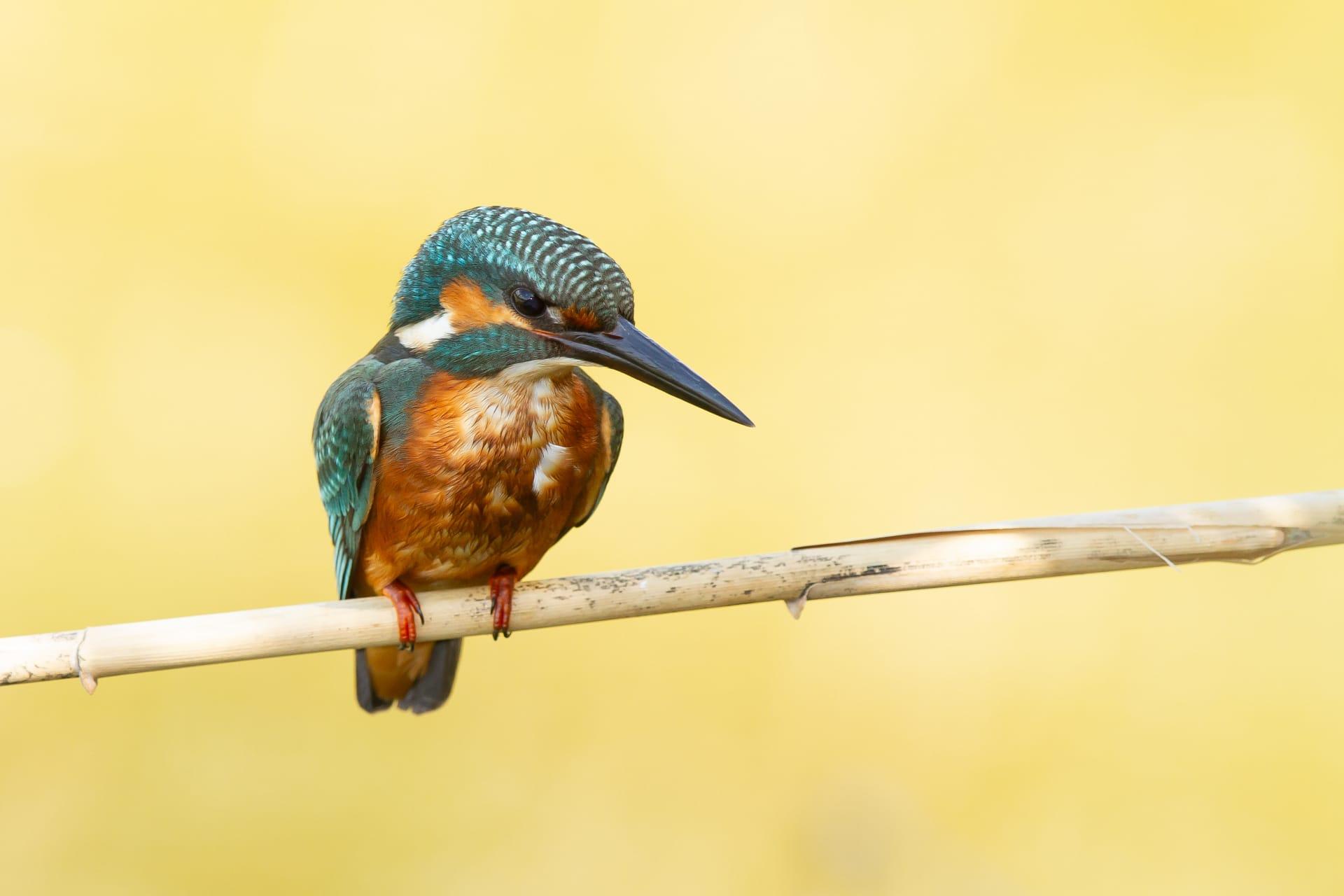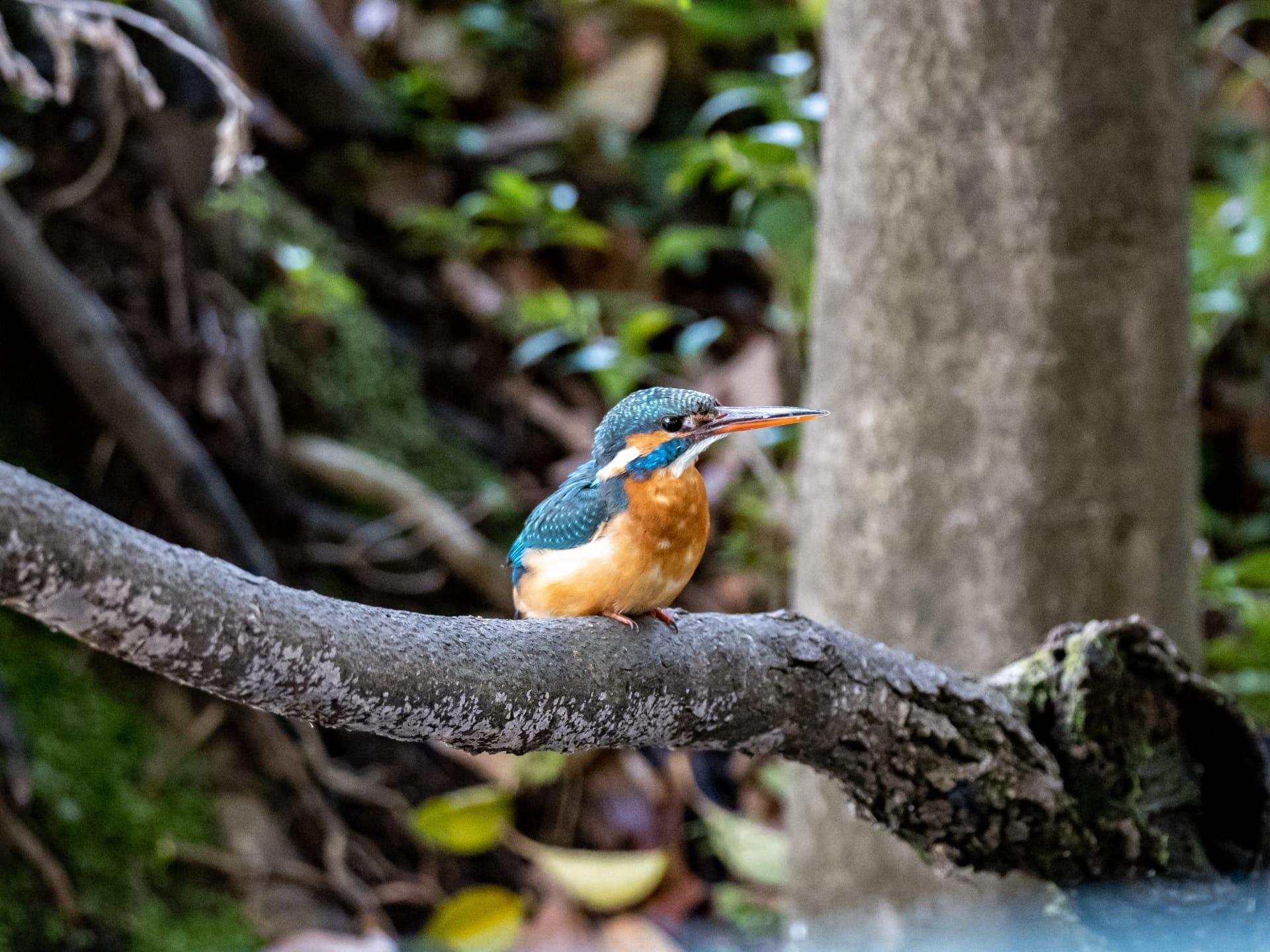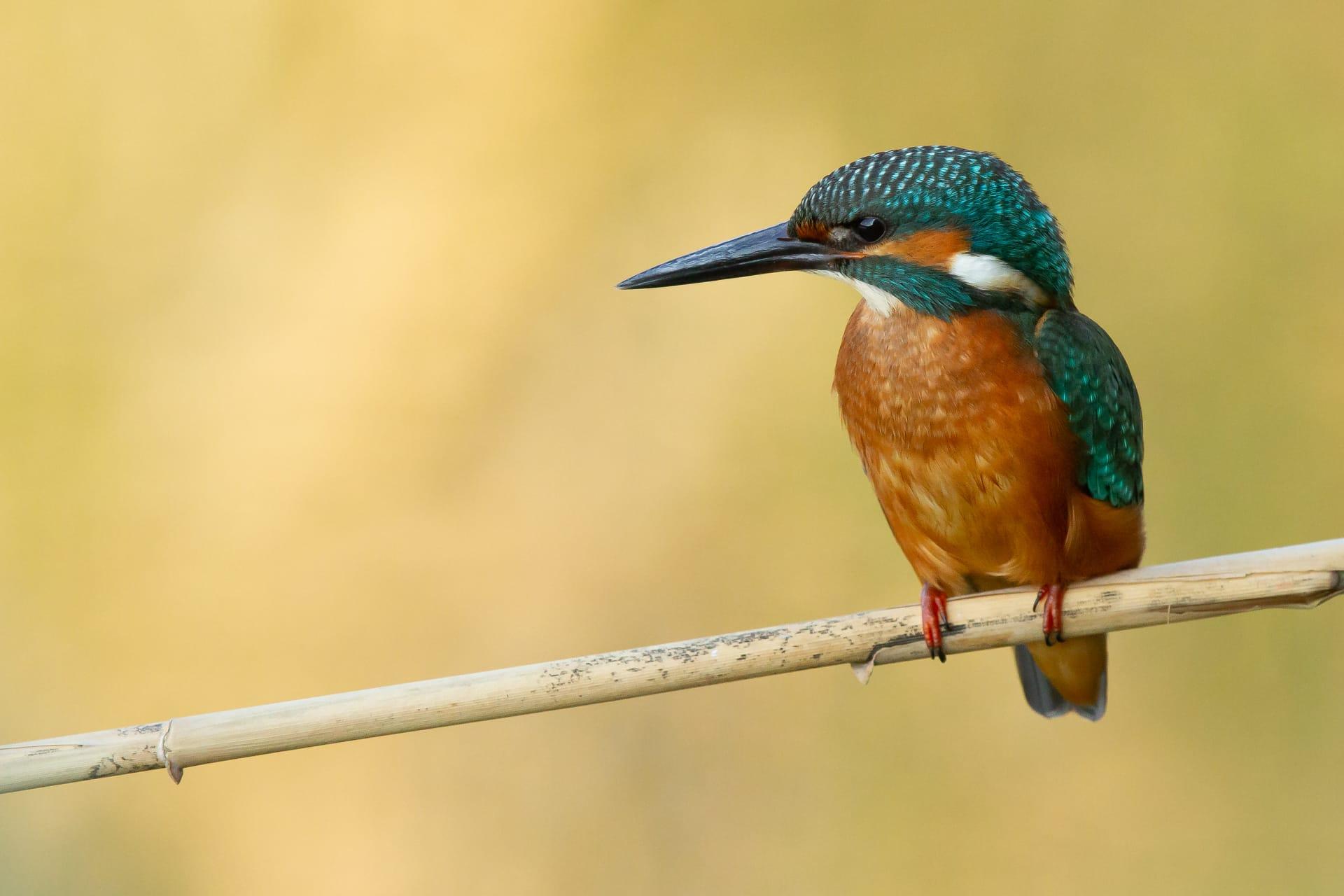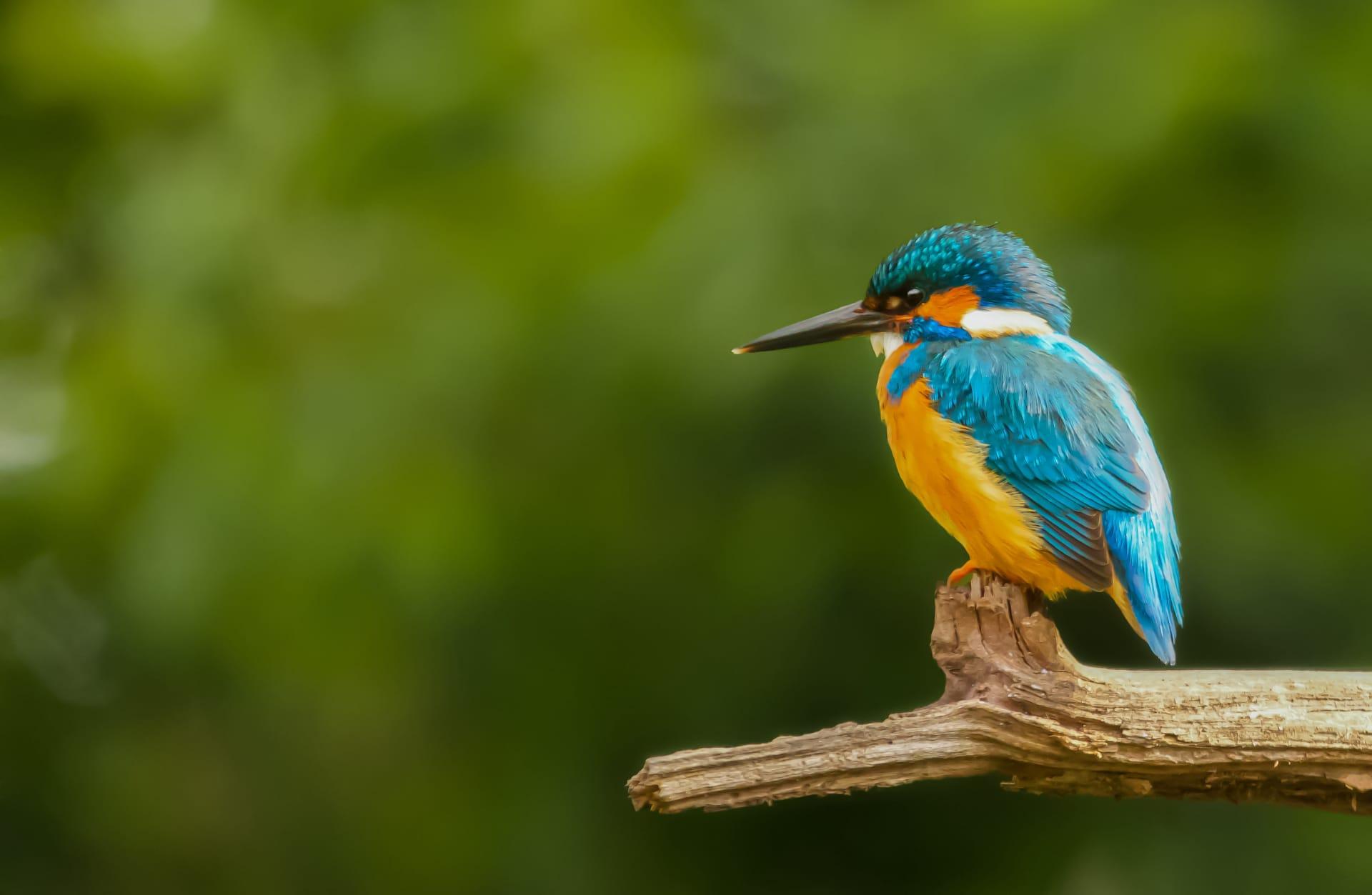1
Kingfishers, with their dazzling plumage and swift hunting skills, are nature's master anglers. The Common Kingfisher (Alcedo atthis), measuring about 6-7 inches in length and weighing around 40 grams, has a disproportionately large head and long, sharp bill perfect for fishing. Its vibrant blue and orange plumage is not just for show; it plays a crucial role in its survival. The blue feathers, containing no actual blue pigment, create an iridescent effect through light refraction. This unique feature helps the kingfisher to blend seamlessly with the water, becoming nearly invisible to its prey.
Another striking feature is the kingfisher's hunting technique. They are known for their remarkable diving skills, plunging headfirst into water to catch fish. What's fascinating is their in-built "goggles" - a third eyelid, known as the nictitating membrane, which closes over the eye when they hit the water, protecting the eyes and helping them to see underwater. This adaptation allows them to judge the refraction of light in water accurately, making them efficient hunters. Their dive is not only swift but precise, reaching depths of up to 2 feet, and they can catch a fish in less than 2 seconds after spotting it from their perch.

2
Kingfishers exhibit intriguing nesting behaviors. Unlike many birds that build nests in trees, kingfishers excavate their nests in riverbanks or sandbanks. These nests are tunnel-like structures, often extending over 3 feet into the bank, ending in a chamber for eggs. The male kingfisher plays a significant role in nest building, using its bill to dig and feet to kick out debris. This process can take two to three weeks, with both the male and female taking turns.
Their mating rituals are equally fascinating. A unique aspect of kingfisher courtship involves the male offering fish to the female. This isn't just a simple gift; it's a test of compatibility. The male presents the fish head-first, and if the female accepts it in this manner, it indicates a successful pairing. This ritual also helps in strengthening their bond. Interestingly, kingfishers are monogamous during the breeding season, and some pairs stay together for multiple seasons, showcasing a level of partnership rare in the bird world.

3
Kingfishers possess an extraordinary vision that aids in their hunting prowess. They have monocular vision in air and binocular vision in water. This means they use each eye independently to spot prey from above water and both eyes in coordination underwater for depth perception. Their eyes are also equipped with specialized oil droplets that enhance color vision, crucial for identifying prey in complex aquatic environments.
Despite their name and fishing skills, not all kingfishers eat fish. Of the roughly 90 species of kingfishers, less than half are actually fish-eaters. The rest, like the Kookaburra from Australia, feed on a wide range of food including insects, small mammals, and reptiles. Their diet varies based on their habitat, with forest-dwelling species tending to be more insectivorous. This dietary flexibility allows kingfishers to thrive in diverse environments, from tropical rainforests to arid landscapes.

4
The vocalizations of kingfishers are as distinctive as their appearance. Each species has its own set of calls used for various purposes, including attracting mates, signaling distress, and communicating with offspring. The Common Kingfisher's call is a sharp, high-pitched 'chee' or 'tsee', often heard before the bird is seen. These calls play a crucial role during the mating season, helping individuals locate each other and establish territories.
Kingfishers also exhibit remarkable adaptability to seasonal changes. In regions where water bodies freeze in winter, making fishing impossible, kingfishers will migrate short distances to find open water. However, some species, like the Belted Kingfisher in North America, are known to survive in frozen areas by switching to a diet of insects and small rodents. This flexibility in both behavior and diet highlights the kingfisher's ability to adapt to varying environmental conditions, ensuring their survival across various climates.

5
One of the most awe-inspiring aspects of kingfishers is their flight. They exhibit a unique flight pattern, characterized by rapid wing beats and short glides, creating the impression of a darting motion. This flight style is not just a spectacle but serves a purpose; it allows them to swiftly maneuver over water and accurately target their prey. Their wings are relatively short and rounded, providing the necessary lift and agility for such fast-paced hunting.
Kingfishers are also known for their solitary nature. Outside of the breeding season, they are highly territorial and prefer to live and hunt alone. This behavior is particularly evident in the Common Kingfisher, where individuals maintain and defend territories that provide ample fishing opportunities. These territories are essential for their survival, as they ensure access to food resources, especially during the breeding season when energy demands are high. This solitary nature adds to the mystique of these birds, often making them a cherished sight for birdwatchers and nature enthusiasts.